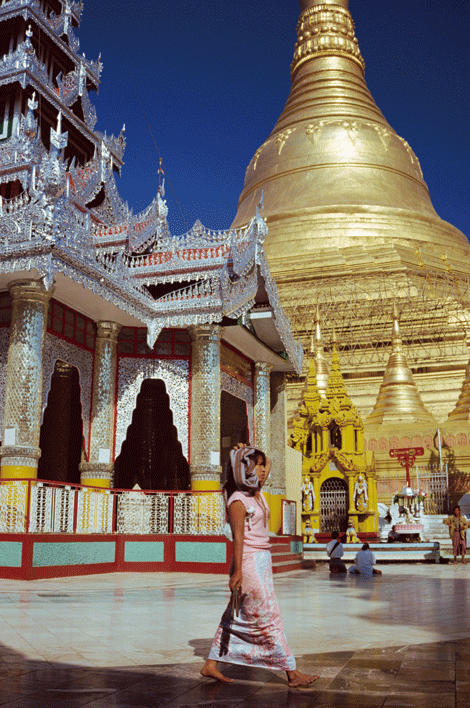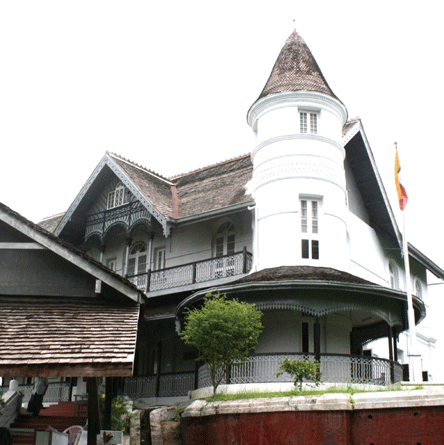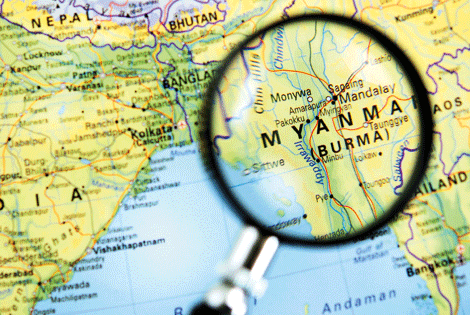In the wake of political reform, Myanmar’s tourism is booming. With visitor arrivals expected to double in three years, plans are rolling out for a second airport for Yangon set to open in 2016. Visa-on-arrival was introduced on June 1, 2012 for business travellers arriving in Yangon, with e-visa to be offered in the future.
Myanmar’s tourism is still relatively undeveloped, but it is quickly taking off. There is a buzz in Yangon, the country’s biggest city, with an increase in business travellers. The monsoon season from mid-May to October usually has low occupancies, but apparently this is not the case this year. Many hotels in the city are fully booked with foreign investors exploring Myanmar’s business potential. If work brings you to Yangon, or if you are simply intrigued with what this emerging tourism destination has to offer, 48 hours in this city will provide a great introduction to a country long isolated from the modern world.
Get your bearings
To say Yangon is unlike neighbouring Asian cities is an understatement. As soon as you arrive, you immediately sense its exotic vibe. Men can be spotted fixing their longyi, the traditional plaid or striped sarong; the faces of women and children are blotted with Thanaka, a powdered bark make-up; and when you point your camera for a photo, you get big, red, betel juice-smeared smiles.
Taxis are the most convenient way to get around town, costing about 2,500 kyat (US$3). The taxi ride can itself be an alfresco adventure, with some open-top vehicles dating back to the 1980s. But this allows you to photograph Buddhist monks walking with their begging bowls, roadside temples, and the simple life on Yangon’s streets. Everyone is extremely kind and helpful – a great asset for a city still innocent and untainted by mass tourism. In fact, there is no word in the local language for tourist, only a word for guest, which is how you are warmly treated.
Saturday
7am – Morning prayer: Every good Buddhist in Myanmar is said to make at least one pilgrimage to the Shwedagon Pagoda in their lifetime. Every wise tourist will not miss this most important religious site in Myanmar. Built on the highest point in the city, it stands out day or night in Yangon. The main stupa, gilded in gold with a spire encrusted with diamonds, is stunning; this religious monument is built on a sacred hill where Buddha relics have been enshrined. But what makes a visit special is witnessing the tradition, faith and rituals around the main stupa and the 82 other buildings in this compound. Entrance fee is 5,000 kyat (US$5), open from 5am until 10pm.

9am – Breakfast: Sample mohinga, the national dish of Myanmar, made of rice noodles and fish with ginger, lemongrass, turmeric and chickpea fritters. It is often eaten for breakfast, or indeed any other meal. There are mohinga stalls all around Yangon, but try Daw Cho Mohinga, located near the East Gate of the Shwedagon and a favourite of local residents. Look for a store producing and selling life-size Buddha statues – Daw Cho Mohinga is right across from it.
10.30am – Retail therapy: Check out Bogyoke Aung San Market, a large emporium with over 1,400 shops selling jewellery, clothes and souvenirs.
1pm – Pit stop: Mingle with locals and foreign staff working in the nearby embassy row at Feel Restaurant (www.feelrestaurant.com). It has an extensive spread of cooked Burmese and Shan dishes – choosing what dishes to eat can be a daunting and dizzying task. I opt for a mutton curry and bean salad (pae thee thout, string beans steamed and served with ground peanuts, sesame, fried onions and a squeeze of lime). Many Indian dishes like vindaloo are part of Myanmar’s cuisine. The bill comes to only 4,200 kyat (US$4) including free soup and dessert, and the service is impeccable, with numerous staff hovering for your needs.
2.30pm – Multicultural experience: Myanmar’s difficult relationship with the outside world in recent decades, and the consequent trickle of visitors while its Southeast Asian neighbours were opening their doors to mass tourism, had one benefit in that the capital’s population of over 100 different nationalities preserved their dialects, customs, food and religion. In Yangon you can visit eight different places of worship in one day; there’s a Buddhist pagoda, a Catholic cathedral, a mosque, a synagogue, a Hindu temple, a Chinese temple, a Sikh temple, and a place where spirits are honoured (you can go for a full-day tour of this).
I visit St Mary’s Cathedral in the heart of downtown Yangon along Bo Aung Kyaw Street. Its gorgeous facade of red brick, spires and a bell tower stands out in the cityscape. Unlike the remaining colonial buildings in Myanmar, this is one of the few designed by a Dutch architect. While Portuguese and British colonialism are evident, there were also strong trading ties with the Dutch in the 17th century.
Afterwards, I head to the National Museum to get an insight into the multicultural facets of Yangon, including a display of the traditional clothing of the main ethnic groups living in Myanmar.
4pm – Cool down: The best way to enjoy a tropical afternoon in Yangon is at The Governor’s Residence, a luxury teak mansion hotel within the Embassy Quarter that dates back to the 1920s, so having a drink there is an atmospheric experience, watching the hotel guests enjoying a relaxing swim while you sip tea, juice or coffee by the poolside.
8pm – Dinnertime: With 135 ethnic groups in Myanmar, traditional cuisines are aplenty. Sample the regional flavours of Myanmar cuisine at Taing Yin Thar (www.taingyinthar.com), where the pork ribs with Shan herbs and kyat oe sue bokekyaw (omelette with Shan Sue Boke leaves) are tasty introductions to the diverse cuisine.
Sunday
9am – Historical perspective: Head to Bogyoke Aung Sun Museum. This was the residence of the revolutionary leader from May 1945 until his death in 1947. Learn about his life, and get a glimpse of their family life, including the childhood bed of Aung San Suu Kyi. The museum reopened last April.

12 noon – Curry and salad: Enjoy lunch at Pandomar (www.myanmar-restaurantpadomar.com), which serves an extensive range of authentic Myanmar curries and salads. Unlike Thai curries and salads, these are not spicy. Restaurants like this one offer free desserts, such as fried banana with honey. It’s a simple but welcome sweet ending to the meal.
3pm – Time travel: Head downtown to see what remains of the 19th century colonial architecture along Pansodan Street. Look out for the High Court Building, The British Council Library, the 1915 Customs House and the Law Court. Each structure has a commanding presence, and offers opportunities for stunning photos.
4.30pm – Happy hour: Indulge in a bit of colonial tradition with High Tea at the Strand Hotel from 2-5pm. This Victorian property, built in 1901, brims with history and elegance. Friday nights are a must at the Strand Bar where select drinks are 50 per cent off from 5pm-11pm.
6.30pm – Getting pampered: After all that walking, treat your feet to a massage. Unlike neighbouring Thailand’s extensive offerings, Yangon offers few choices in the spa scene. But one unique experience is Foot Massage under the Stars, where you get your feet kneaded beside the swimming pool of the Park Royal Yangon (33 Alan Pya Phaya Road, tel +95 1 250 388).
8pm – Organic eats: Do yourself a favour and taste the best cheeses, meats, yogurt, burger and pizza at Sharky’s (117 Dhamazedi Road, tel +95 1 524 677). All ingredients are organic and locally made in Myanmar. Owner Ye Htut Win, who was born in Myanmar but lived in Switzerland for 28 years, is the genius behind this joint. Despite the country’s humidity, he has created 18 decadent cheeses from local dairy. Win created two unique cheeses: one uses Mandalay beer instead of washing it in saltwater, while the other has gold leaf traditionally eaten for good health and beauty. Instead of Parma ham, Sharky’s produces Barma ham made from locally farmed pigs using local Ngapali sea salt. It doesn’t get more authentic than that!
How to get there
International airlines service Yangon from Bangkok (Thai Airways, Bangkok Airways, Myanmar Airways International, Air Asia), Singapore (Silk Air, Myanmar Airways International), Ho Chi Minh City and Hanoi (Vietnam Air), China (China Eastern and Air China), Kuala Lumpur (Malaysia Airlines) and India (Air India). Head out of the airport and hail a cab to take you downtown for about 8,000 kyat (US$10). The ride takes about 30 minutes.

Places to stay
Relive the British colonial times by staying in one of Myanmar’s historic hotels. The Governor’s Residence (tel +95 1 229860, www.governorsresidence.com, rates from US$297) is a 1920s restored teak mansion with 48 guestrooms and suites, tropical landscaping and an inviting swimming pool. If you want downtown accommodation in a 1901 national landmark, stay at The Strand (www.lhw.com/thestrandyangon, rates from US$630). The sophistication of this three-storey Victorian hotel with black lacquered ceiling fans, rattan furniture, inlaid teak wood and personalised butler service takes you back to the time of Rudyard Kipling.
Getting around
Taxis are the best way to get around. As there are no meters, it is best to get your hotel concierge to negotiate before each trip the amount you will pay before getting in. Most trips around the city will cost between 2,500 and 4,000 kyat (US$2.90-$4.70).
Maida Pineda








